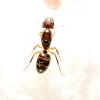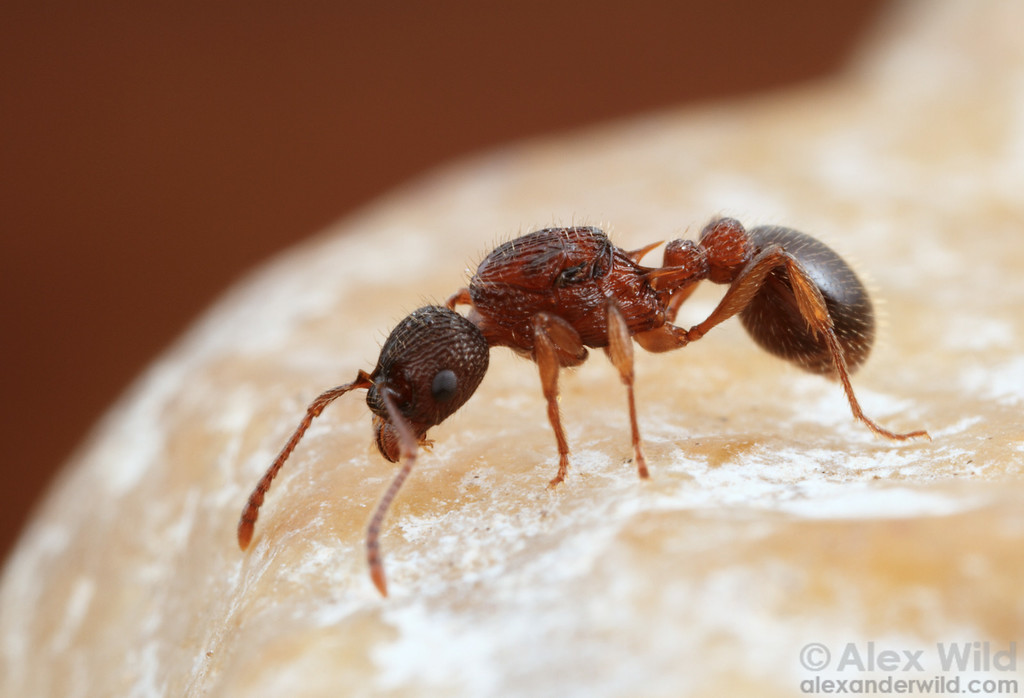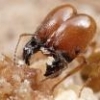Hey guys. I’m back at it again with an ID and not knowing what I'm doing.
I has this queen that was caught during a flight last year. She’s small 5~6mm in length. I originally thought she was Aphaenogaster but not anymore. She’s dwarfed by my A.picea queens, and her workers are half the size of my A.picea workers. She also has a slightly different shape.
Possible myrmica?
1. Location of collection: Nuptial flight. Northern Michigan. USA
2. Date of collection: Unknown
3. Habitat of collection Unknown
4. Length 4~6mm
5. Coloration, hue, pattern and texture Dark brown/red. Very course head and thorax, smooth gaster.
6. Distinguishing characteristics Unknown
7. Anything else distinctive No odor
8. Nest description Unknown
9 . Post the clearest pictures possible of the top, side, and face of the ant in question, and if possible, their nest and the habitat they were collected in.



I’ll get more pictures soon.































